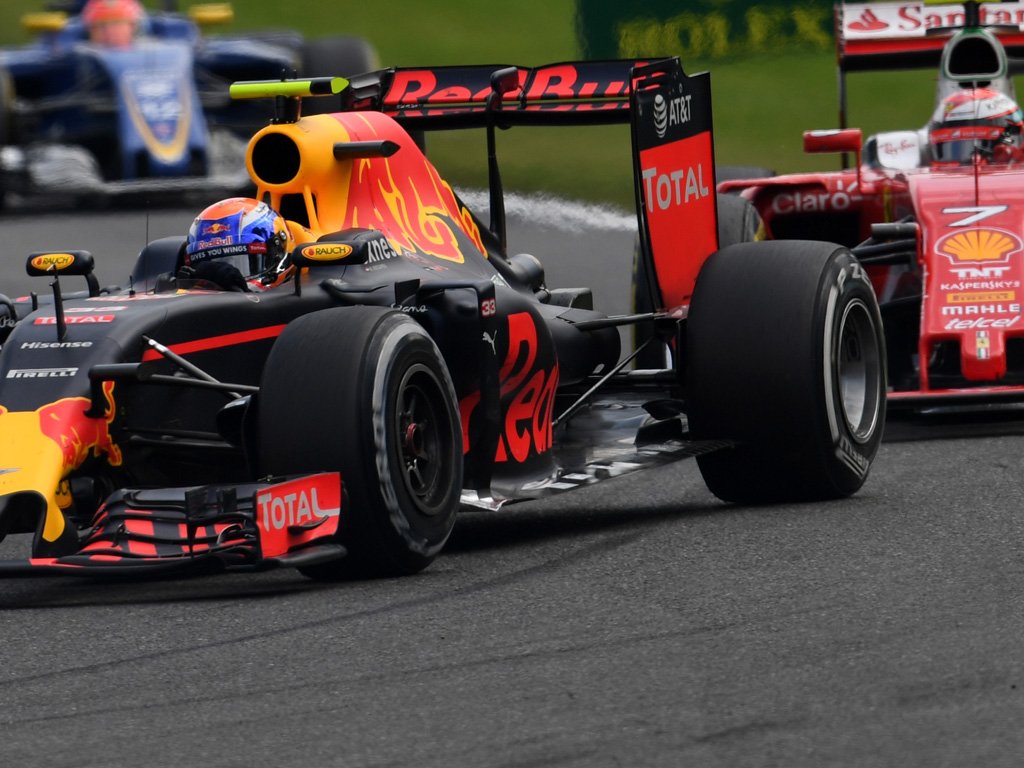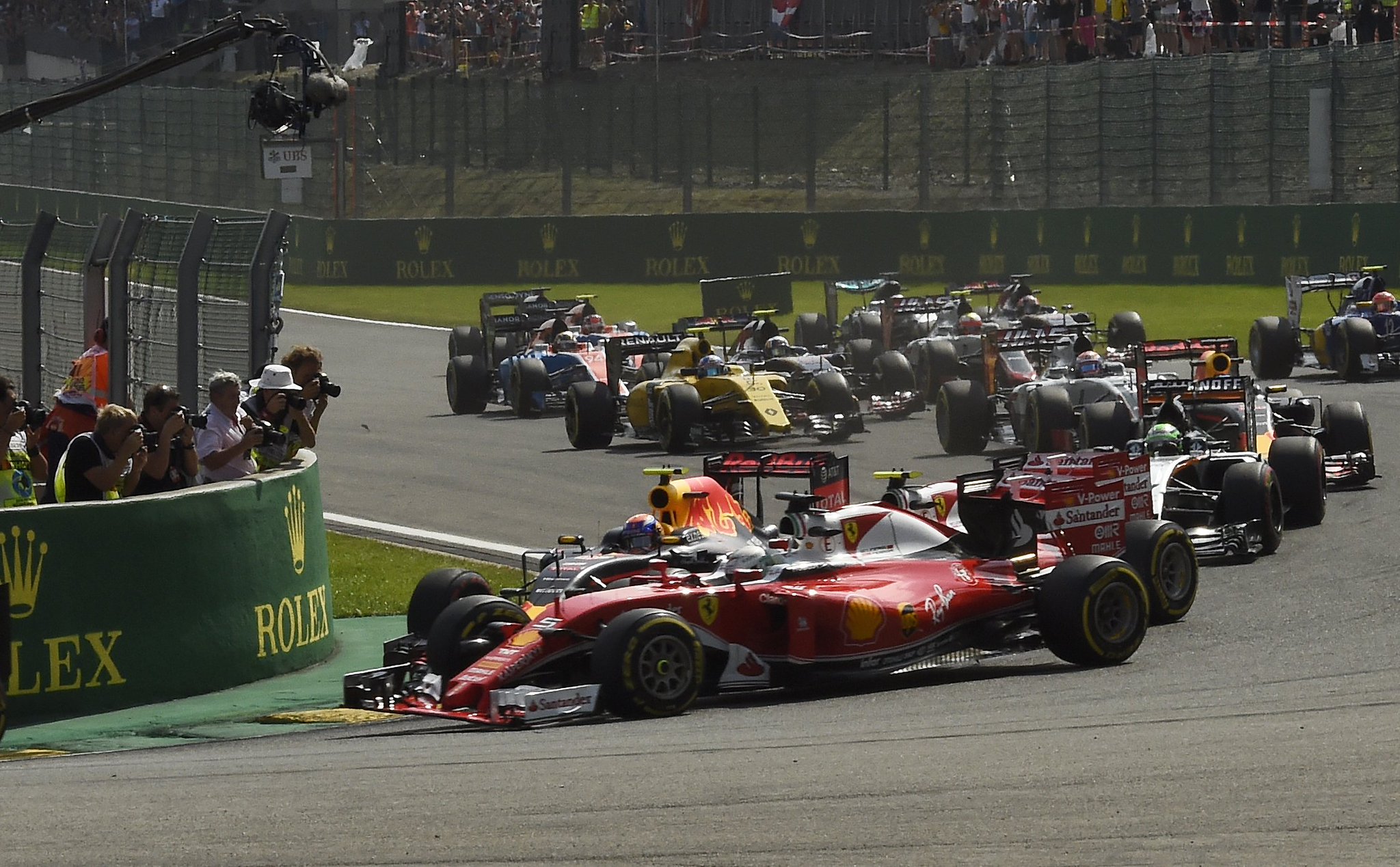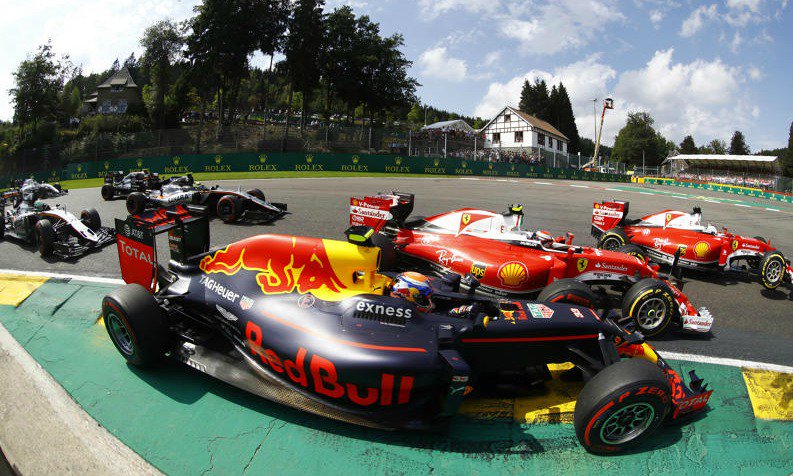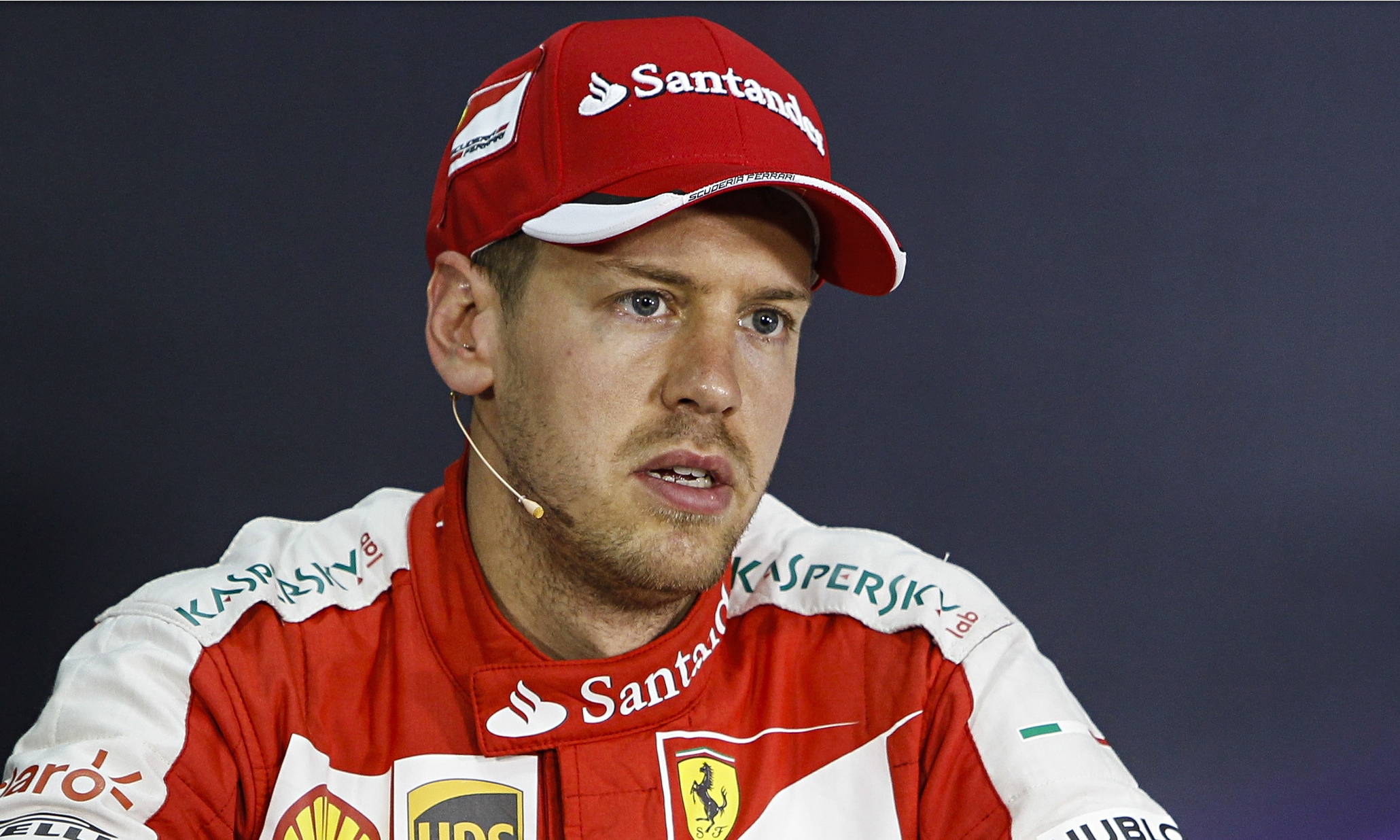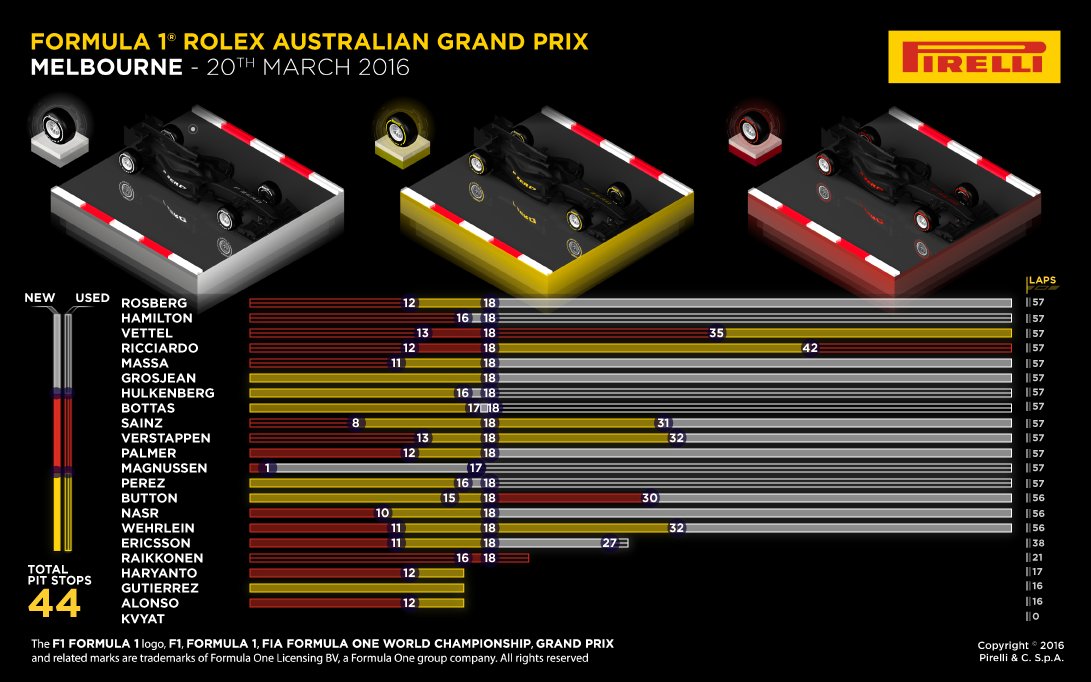
DRIVER OF THE DAY
Kimi Raikkonen (Ferrari, P5)
Another race, another lost cause. It may seem bizarre Kimi bothers with F1 anymore, but his majestic overtakes reminded everyone of his passion and resolve. The Finn proved he has unfinished business and his double overtake on Sergio Perez and Jolyon Palmer is proof that the fire continues to flicker in the Iceman’s belly.
Winners

Nico Rosberg (Mercedes, P1)
33 points ahead of Lewis Hamilton in the driver’s world championship.
Max Verstappen (Red Bull, P2)
Underlined his credentials of a future F1 legend once again. A peerless drive was illuminated by his feisty defence in the closing laps, where his block move against Lewis Hamilton out of 130R into the Casino Triangle chicane raised eyebrows again from critics. However, his perfect exploitation of the regulations showed: the Dutchman used the racing line to go wide on the exit of 130R, but swerved left to position himself onto the orthodox line for the run to Casino. The rules state a driver is allowed one move on the straight leading to a corner; therefore Max cunningly utilised the regulations to his advantage by promptly interpreting his exit line out of 130R as entirely separate from his defensive manoeuvre on the run-up to Casino. Hamilton took the inside line, but FIA regulations deemed Verstappen eligible to chop him off and cover the inside line. The most splendid aspect of Max’s move was how subtle and graceful it was: unlike his hasty, abrasive defensive manoeuvres on Raikkonen on the run-up to Les Combes in Spa, the Dutchman has adapted his defence technique in a very short space of time.

Sebastian Vettel (Ferrari, P4)
Ignoring his foul-mouthed performance on his radio, the 29 year-old German drove as well as could. The decision to gamble on softs in the final stint was, however, yet another example of Ferrari’s never-ending incompetence regarding pit strategy. Relationship breakdowns rumours are escalating and opinions within the Italian media of Vettel are rapidly deteriorating.
Daniel Ricciardo (Red Bull, P6)
Not one of his finest races, but his outside chances of winning this year’s drivers’ championship have extinguished. The Australian struggled with car balance and tyre degradation in a race where his team-mate illuminated the headlines again.

Sergio Perez & Nico Hulkenberg (Force India, P7 & P8)
The Mexican continued his domination over his highly-touted German team-mate with another narrow finish in front of him, as Force India collected ten points to extend their advantage over Williams in their quest for P4 the constructors’ standings with just four races remaining. Hulkenberg confirmed his move to Renault this Friday, whilst Perez continues at Silverstone-based squad for 2017. Some feel Perez is occupying his seat for one more year in the hopes of a seat at Ferrari for 2018, as the contracts of Raikkonen and Vettel end next season. Other believe he has an eye on a seat at McLaren, but his relationship with the Woking-based squad was tarnished by his poor 2013 season with them.

Felipe Massa & Valtteri Bottas (Williams, P9 & P10)
An average season continues for this Banbury-squad, as retiring veteran Massa finally got one over his fledgling tam-mate Bottas. The Finn is rumoured to be lined up for the second seat at Renault, who are looking to revamp their team after a dismal 2016. Rumours of Lance Stroll & Felipe Nasr continue unabated, but outsiders such as Daniil Kvyat, Romain Grosjean & Pascal Wehrlein remain in the frame for seats at Williams.

REJECT OF THE DAY
Esteban Gutierrez (Haas, P20)
The 25 year-old Mexican’s hopes of a seat for 2017 continue to plummet by each passing race. Despite vowing to end his hoodoo of continually finishing P11, Gutierrez succeeded to outsmart himself and limp home in P20, a staggering ten places lower than where he started. The Haas car may be difficult to drive in race conditions, but he surely isn’t going to attract any suitors after this farcical performance.
Losers
Lewis Hamilton (Mercedes, P3)
The Englishman went into Japan ill-affording more points conceded to his arch-nemesis Rosberg, but once again Hamilton was completely trumped. There may be 100 points still available, but Rosberg can now finish P2 in the remaining four Grands Prix and win his first drivers’ championship, so Hamilton is in dire need of divine intervention. Speculation over what caused his poor starts left conspiracy theorists raging again, ranging from the damp surface on his particular gird slot of P2, where FIA had explicitly banned any drying of the start-finish straight 30 minutes before the race’s start, to his clutch slipping again. There was consternation over Verstappen’s defensive manoeuvre on the penultimate lap, however in hindsight, Hamilton could have chosen the outside line to avoid such a hoodwink. This will prove academic if Rosberg wins just one more race and seal this year’s title emphatically.

McLaren Honda (P-Nowhere)
In the space of just one Grand Prix weekend, McLaren swing from a double-points finish at Sepang to a horror return to the atrocious displays of their annus horribilis of 2015. Somehow, they failed to find a suitable set-up for Suzuka and this time they could not blame Honda; their chassis never achieved an optimum level of grip and handling required for the elevation changes in the fast corners, leaving Alonso and Button to perform even more abjectly in front of the “home” crowd than they did last year.

Blue Flags
On the tight, twisty confines of Suzuka, traffic was always going to be a major gremlin for front-runners, but the non-existent attrition rate of this year’s display left the big boys fuming in disgust. Depending on your criteria, this year’s Japanese Grand Prix is only the fifth in F1 history (and second race this season after Chinese Grand Prix) to have all starters finish past the chequered flag and classified, whereas if you include last year’s race (where Felipe Nasr’s Sauber was classified despite retiring two laps shy of the full distance) and the dubious 2005 US Grand Prix (where only six cars started and finished after the Michelin-shod cars withdrew before the start), this is the seventh race in F1 history to have all starters classified.

Pascal Wehrlein (Manor, P22)
The German joins Hans Hermann, Narain Karthikeyan and Jolyon Palmer on the ignoble list of drivers who finished last in races where starters finished. Of course, Patrick Friesacher and Felipe Nasr join the list if you include the classification of the actual starters and retired cars classified having completed at least 90% of the race distance.











